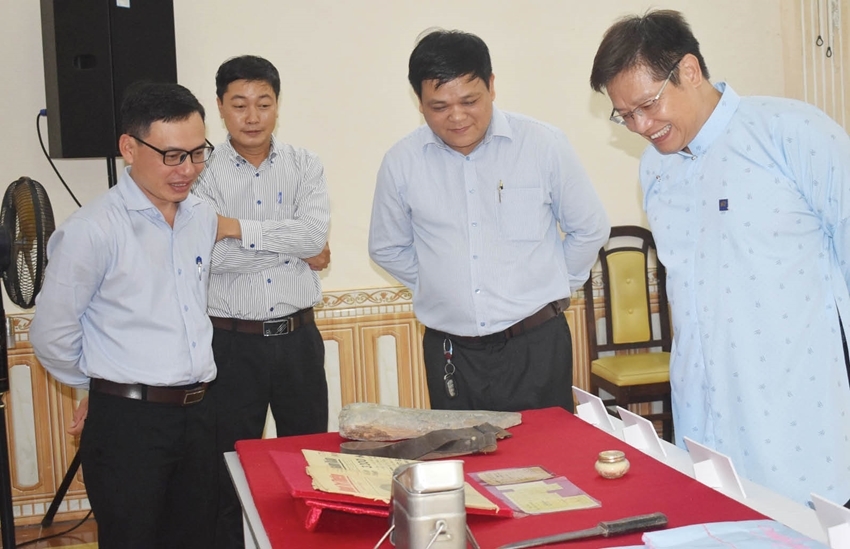 |
| Precious documents and artifacts donated by individuals to Thua Thien Hue History Museum |
The donation event was just held in the middle of December. Previously, the Thua Thien Hue History Museum invited experts to appraise and have initial assessments of these artifacts.
Among the 80 artifacts received from 6 individuals on this occasion, some are considered precious. Notably, experts from the National History Museum believed that the animal head earring donated by Mr. Ngo Van Anh is the jewelry of the ancient people of the Sa Huynh culture. “The animal head was exquisitely crafted with two highly curved horns, leaf-shaped eyes, a thick piercing body, a high notch right in the center, a round hole, and drilled at both ends to separate the core, which is considered very delicate and rare at this period in general and in Thua Thien Hue province in particular,” confirmed experts.
Or, the stone door threshold donated to the museum by Mr. Huynh Hoi is made from the whetstone - a natural stone, dating back to the 19th-20th centuries. Experts from the Faculty of History, University of Sciences (Hue University) said that, according to the fengshui concept of the ancients, this door threshold plays a very important role. It has the effect of preventing as well as reducing the speed of bad airflow, insects, bugs... entering the house.
It is impossible not to mention the group of artifacts from the period of the resistance against American imperialism and the period of building and defending the Fatherland. That is the belt of Mr. Le Duy Vy (Captain of the Second District - Hue City Military Command, used during revolutionary activities from 1970 - 1971) – a comrade of Mr. Nguyen Dinh Dai. After Mr. Le Duy Vy sacrificed, Mr. Dai kept this belt as a souvenir until he donated it to the museum to serve its scientific research, display, and introduce it to the public. There are also many other artifacts such as daggers, lunch boxes, pillowcases, and handkerchiefs..., that were used during the revolution, and were also donated and received on this occasion.
According to a leader of the Thua Thien Hue History Museum, Hue is a land with a rich cultural history and tradition of resilient revolutionary struggle and a place where the nation's cultural quintessence is crystallized and converged. Along with this, the process of interference, acculturation, and diffusion has given Hue culture its unique characteristics and broad influence. Therefore, preserving cultural heritage plays an extremely important role. In that work, the museum is always a pioneer in collecting and mobilizing organizations and individuals to donate artifacts.
The donation movement is an important activity, demonstrating the close connection between the museum and the public in preserving and promoting the good historical and cultural values of the land. These artifacts also enrich the content displayed at the museum, so that the artifacts are preserved and their value is promoted, and widely introduced to everyone.
Mr. Nguyen Duc Loc, Director of Thua Thien Hue History Museum, said that the documents and artifacts received from previous years as well as in 2023 are always committed by the museum to preserve, manage, and maintain. At the same time, we also have a scientific and reasonable display plan. “In the coming time, we will continue to promote advocacy work and call for donations of artifacts with many creative methods and approaches. This is one of the key tasks of the cultural sector as well as museums,” emphasized Mr. Loc.